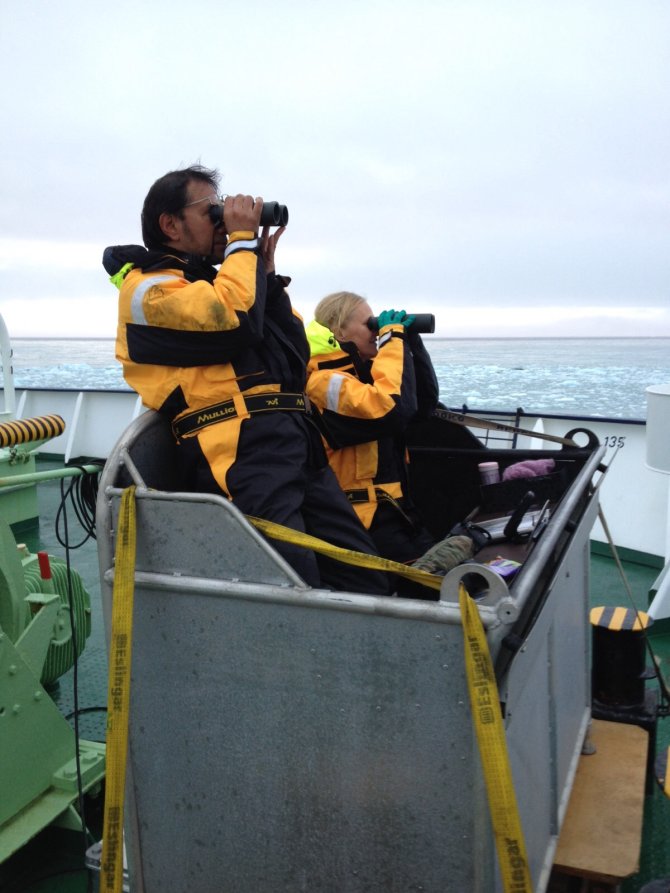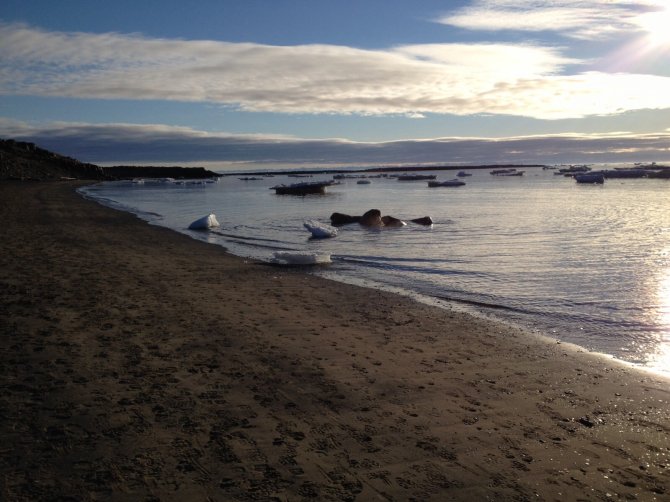
Blog Expedition Svalbard: The work has started!
After we left Longyearbyen on Wednesday 19 August 2015 we started our work straight away. We set up our lab on board together with our colleagues of the NIOZ. We now have 4 lab tables with a designated wet and dry work space.
The weather was a bit rainy with wind and a lot of swell. There were quite few people feeling not too happy... On our way south to Storfjord on the south-eastern side of Spitsbergen the internationally standardized marine mammal and bird monitoring could start straight away. Hans, Steve, Meike, Geert, Roger and Sophie took their turns in the bird box on the front of the vessel looking at which marine birds and mammals were spotted and in what number. They can only do this during sailing.

On Thursday 20 August 2015 Andrea and Martine started sampling algae and zooplankton at the first landing site on the south-eastern tip of Spitsbergen. At several sites near a bird cliff a plankton net was used from a zodiac. This was just enough material to have Andrea start her first ballast water test that same night.

Friday was a magic day at Kapp Lee, Edgeøya. Sunny and no wind, it was even warm! We were surrounded by little pieces of ice and the water was crystal clear, so we could directly see the pteropods (flying snails), comb jelly fish and little shrimp swim in the water. One part of the marine mammal group (Steve, Roger, Geert and Sophie) went as soon as possible ashore to study walruses on land and in the water. They gained a lot of information on walrus behaviour. Walruses are for sure as nosy as we are as a group of four young males came to the beach to check us out. Meike and Hans were able to deploy two CPODs to record the sound of whales for two days, perhaps even the harbour porpoise. Also more plankton samples were collected for the toxicity testing. The first ballast water tests are in full swing and hopefully the oil experiments can be started soon too...